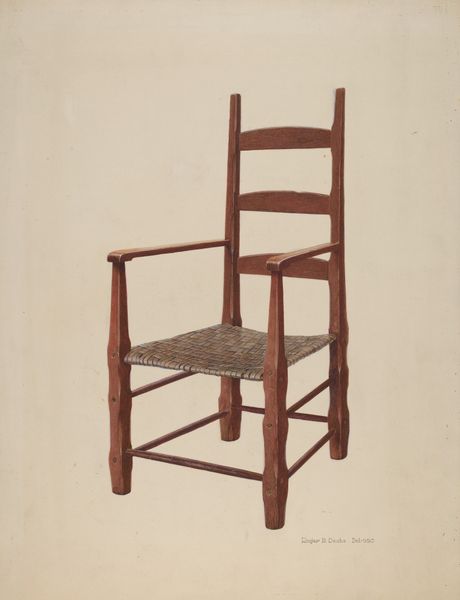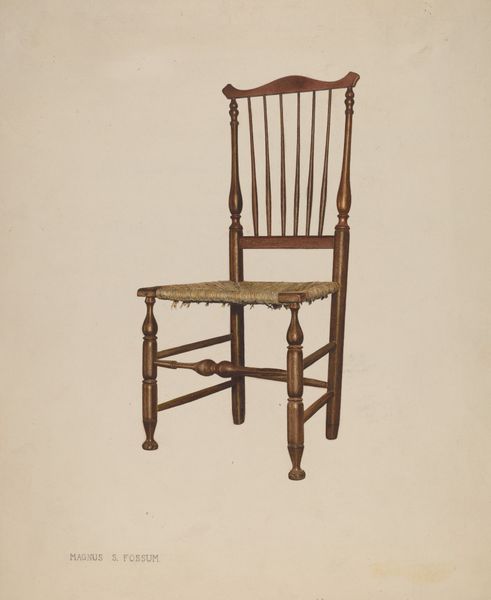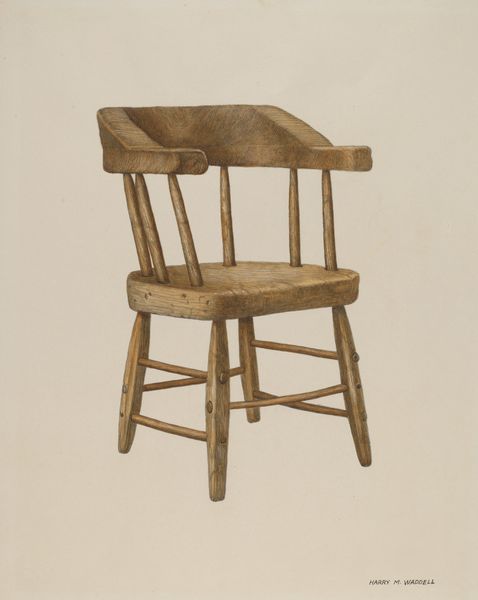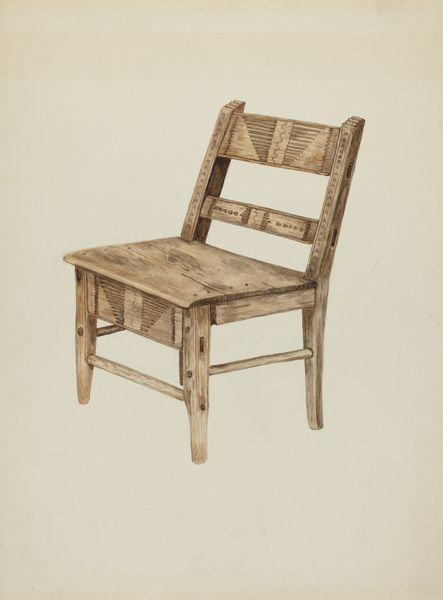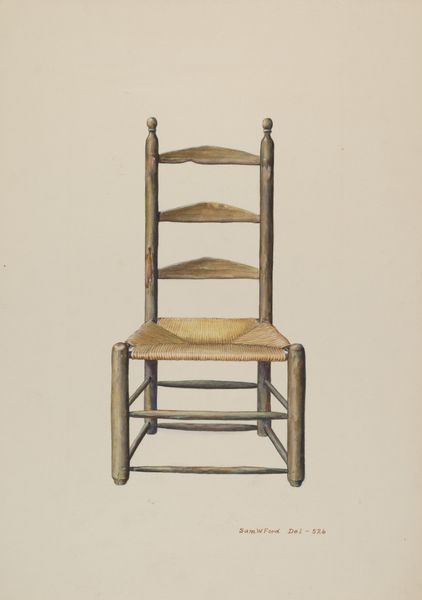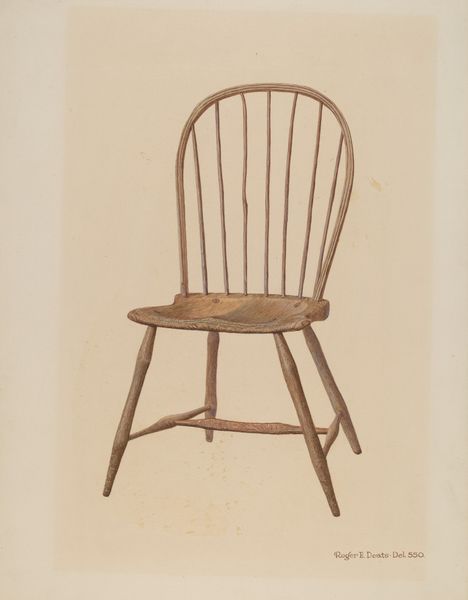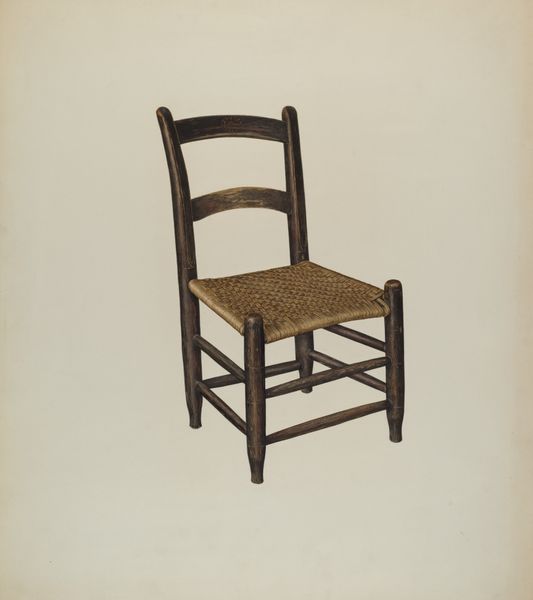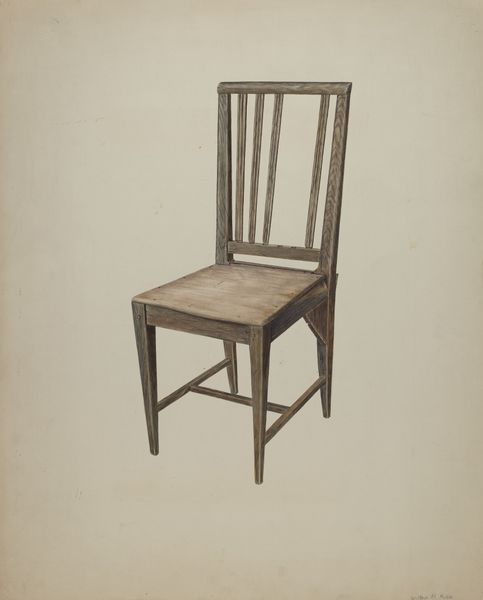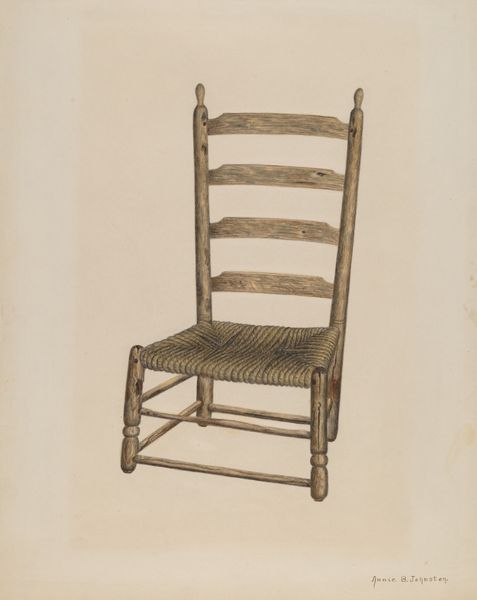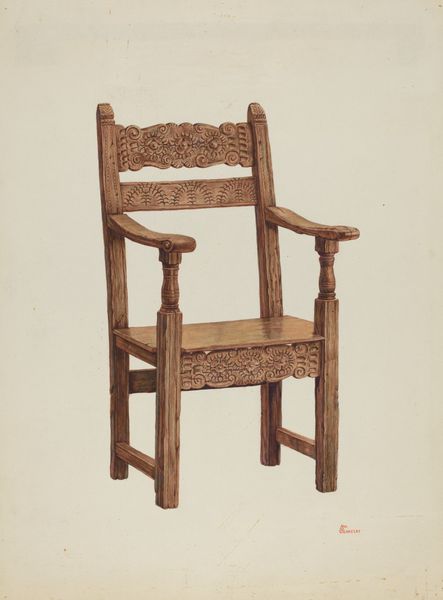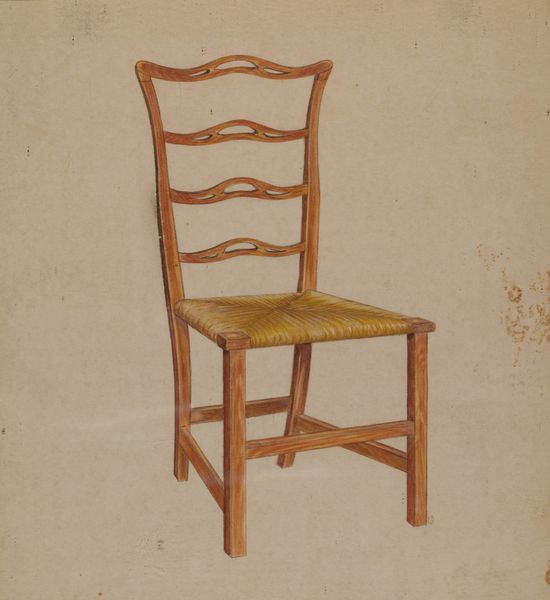
drawing, pencil
#
drawing
#
pencil
#
realism
Dimensions: overall: 34.9 x 24.2 cm (13 3/4 x 9 1/2 in.) Original IAD Object: 34"high; 19 1/2"wide; 13 1/2"deep.
Copyright: National Gallery of Art: CC0 1.0
Editor: Here we have Dorothy Johnson's "Braided Rawhide Bottom Chair," circa 1940, a pencil drawing on paper. It's…surprisingly intimate for a picture of a chair. The textures really draw you in. What strikes you about this piece? Curator: Immediately, I'm interested in the labor embedded in both the subject and the artwork itself. The chair isn't some mass-produced item; it's a handmade object. The rawhide braiding, the slightly irregular wood – these details speak to a specific kind of craft and a likely rural, domestic setting. Notice, too, how the artist chose to depict it. Editor: You mean focusing on something so everyday, elevating the mundane? Curator: Precisely. And consider the medium. A drawing, especially one so detailed, requires significant time and care. It prompts questions about the social status of craft versus fine art. Was this chair simply a functional item, or did it hold a different significance? Editor: So, the very act of drawing the chair elevates its status? Turning utilitarian object into something "worthy" of art? Curator: Partly, yes. But more than that, it highlights the often-overlooked skill and labor involved in creating everyday objects. This wasn't furniture from a factory, made according to someone else's choices and schedule; and consider what rawhide suggests about regional resources. It also makes us consider the economic factors impacting the creation and even consumption of objects like this during that time period. Does this artist suggest the social status of craftwork and consumption practices of this piece in particular, do you think? Editor: Definitely food for thought. I never considered the layers of labor represented in such a simple image. The rawhide aspect makes the piece feel connected to specific place and time. I’ll certainly look at drawings and furniture differently from now on. Curator: Indeed. Paying attention to these aspects helps us appreciate the artistry present even in the most functional corners of our lives.
Comments
No comments
Be the first to comment and join the conversation on the ultimate creative platform.
